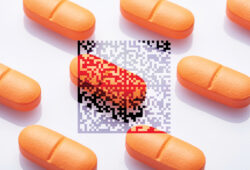Available by prescription, tests may reduce burden on facilities
In the early days of the COVID-19 pandemic, widespread shortages in diagnostics thwarted healthcare facilities across the United States. But a year later, an array of at-home COVID-19 tests are available that may help both patients and health systems expedite care and potentially lighten the load on facilities as the pandemic continues.

By late 2020, the Food and Drug Administration (FDA) had granted emergency use authorization to diagnostic at-home SARS-CoV-2 tests. These tests enable individuals to collect their own nasal or saliva swab and either mail away for results or receive rapid results with videoconferencing guidance, according to Christa Pardue, MBA, MT(AMT), former Director of Laboratory Services at HealthTrust.
All at-home tests—some of which can also detect influenza—currently must be prescribed by a healthcare provider. However, that could soon change, and that development would not only help end users, but it would affect healthcare organizations as well. “It wouldn’t surprise me to see these tests on the shelves in drugstores within a year,” Pardue says. “I’m hoping if there’s enough home testing, it will divert a lot of the demand facilities are experiencing and ease the strain of what they’re dealing with.”
Accounting for the end user
Obtaining an at-home COVID-19 test is fairly straightforward, experts say. People with symptoms consistent with the virus can request a healthcare provider to authorize that a test kit be sent to their residence.

Depending on the type of test—either self-collection to mail out, or self-collection with rapid at-home results—patients generally have access to written directions and/or an online proctor to walk them through the process. At-home tests are either molecular tests, such as PCR tests for the virus’s genetic material, or antigen tests that detect specific virus proteins. Prices range from $25 to $150, depending on test type, says Holly Moore, MSN, CCRN-K, Director of Clinical Services at HealthTrust.
But sources worry about issues that may arise with self-testing. “The test itself may be accurate, but the collection might be poor,” Pardue says. “That part makes me nervous—the process isn’t fully understood by the general public.”
“There might be more room for error in sampling with at-home tests,” Moore adds. “A sheet of instructions in front of an at-home user may not be enough. There’s definitely more education needed, and I think testing companies are trying to address that.”

Michael Johnson, MBA, MT(ASCP), HealthTrust Lab Board member and Assistant Administrator and Director of Laboratory Services at Sumner Regional Medical Center in Gallatin, Tennessee, agrees. “One con of the test might be the quality of the specimens, which could affect the quality of the results,” Johnson says. “Another concern I have is that folks who may need medical treatment might test themselves at home when their symptoms are more emergent and require more emergent care,” he adds. “They might not get that care.”
Pardue and Moore are also concerned many people don’t understand that a negative COVID-19 test outcome doesn’t guarantee they don’t have the virus. All home tests, however, require a conversation with a healthcare provider to discuss the results.
“Every test has certain weaknesses, and some may show false positives or false negatives,” Pardue explains. She notes that test rate data is provided in the instructions for use (IFU) of each individual test.
Reducing demand at healthcare facilities
It’s difficult to predict the far-reaching implications of at-home COVID-19 tests, sources say. But if more potentially infected patients get tested at home—at least initially—this trend might lead to less demand at physician offices, urgent care clinics and other testing hubs. “At-home tests won’t completely replace lab-based testing,” says Johnson. “But if someone doesn’t have severe symptoms and can test and quarantine at home, it might reduce the burden on testing at healthcare facilities.”
Share Email COVID-19, FDA Updates, Laboratory, Q2 2021




